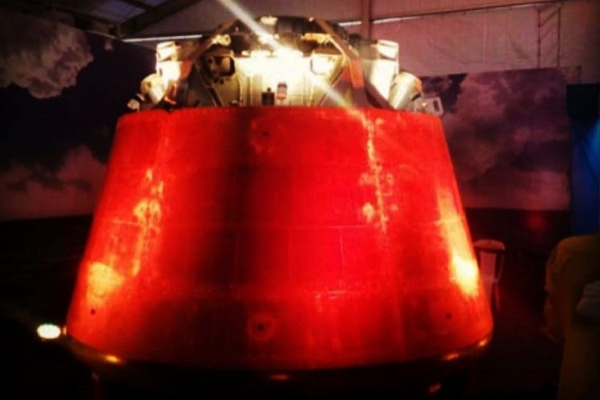A laboratory of the Defence Research and Development Organisation (DRDO) and a relatively recent Indian Space Research Organisation (ISRO) centre have come together to conduct special tests for India’s landmark Gaganyaan mission.
DRDO’s Terminal Ballistics Research Laboratory (TBRL) signed a memorandum of understanding (MOU) with ISRO’s Human Spaceflight Centre (HSFC) via video conference on 31 March this year.
According to the June edition of the DRDO newsletter, the two centres joined hands to conduct hypervelocity impact studies on Gaganyaan crew module material specimens against micrometeoroid and orbital debris (MMOD).
The MMOD, or “space junk”, poses a serious threat to human spaceflight and robotic space missions. Space agency National Aeronautics and Space Administration (NASA) says that the United States tracks more than 27,000 pieces of orbital debris but that the actual debris figure — including the smaller pieces that are difficult to track — is much higher.
Even a little piece of this swirling debris — going around the planet at hair-raising speeds of roughly 25,000 kilometres per hour — can endanger a spacecraft.
DRDO says that “even a paint flake can cause significant damage to the crew module in the absence of appropriate shielding”.
Contrary to orbital debris, which is found mostly around our planet, meteoroids go around the sun. Still, their floating fragments can spell trouble for spacecraft and, therefore, make up a component of space debris along with the leftover material and stages from space missions and other Earthly objects sent to space.
The MMOD impact studies, for which TBRL and HSFC have teamed up, are therefore important to ensure the safety of crew members on the Gaganyaan space mission.
As per the agreement, more than 50 hypervelocity impact tests are envisaged to be carried out.
The TBRL’s two-stage light gas gun facility has been identified for testing, says the brief report in DRDO’s monthly bulletin. At this facility, a velocity of more than 5,000 metres per second (over 18,000 kilometres per hour) has been previously achieved.
Some feasibility studies involving dummy targets have taken place already.
The TBRL is a Chandigarh-based DRDO lab for research and development in high explosives processing, detonics and shock dynamics, blast and damage, lethality and fragmentation, performance evaluation of warheads and other armament systems, among others.
It came into being in 1967, inspired by the introduction of new-generation weapons and warheads in militaries around the world in the wake of the Second World War.
The HSFC emerged more recently. It was inaugurated in January 2019 at the ISRO headquarter campus in Bengaluru.
This centre is responsible for the implementation of the Gaganyaan project. Its scope of work includes mission planning, development of crew systems, crew selection and training, and working towards sustained human spaceflight missions.
When it was inaugurated, a full-scale model of the Gaganyaan crew module was unveiled as well.
A year later, the HSFC put out an invitation for expression of interest to design and deliver materials for MMOD protection. It asked for debris shielding to be provided for the orbital module of human spaceflight, based on risk assessment.
The document said that the spacecraft would be manoeuvred in case of a threat from debris larger than 10 cm, but that in light of potential damage caused by smaller debris, meteoroid and debris protection would be required.
Gaganyaan will be India’s first foray into human spaceflight. The programme aims to demonstrate India’s capability to send humans to low-earth orbit on an Indian launch vehicle and bring them back to Earth safely.
The human rating process of the Geosynchronous Satellite Launch Vehicle-Mk III, which is expected to ferry astronauts to space and back, is underway. The first flight of the rocket without crew is slated to happen at the end of this year.
Another crewless flight is planned next, before the rocket takes off with astronauts on board from Satish Dhawan Space Centre, Sriharikota, into a roughly 400 km low-earth orbit.
Four Indian astronaut candidates underwent general spaceflight training in Russia before returning in April this year. They will be going through Gaganyaan-specific training in Chennai and Bengaluru as part of the programme.
Source: Swarajya Magazine
You may also like
-
New Heat-Based Approach To Cancer Treatment Can Reduce Chemotherapy Doses
-
Scientists Take A Major Step Towards Unification Of Classical & Quantum Gravity
-
India Graphene Engineering and Innovation Centre (IGEIC) Under the Vision of Viksit Bharat@2047 Launched
-
New High-Performance Gas Sensor can Monitor Low Level Nitrogen Oxides Pollution
-
Antidepressant Drug can be Repurposed for Treating Breast Cancer
